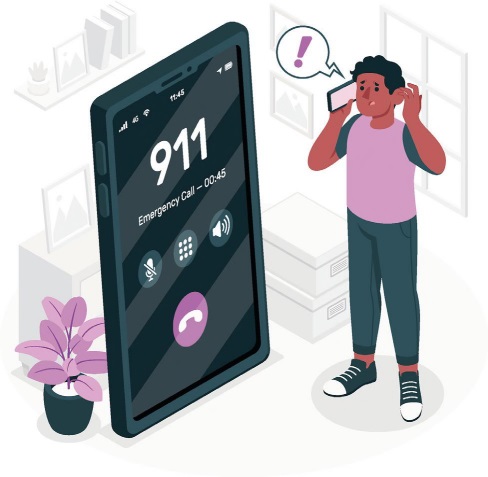10 TIPS FOR POLICE, PARAMEDICS AND EMTS WHO RESPOND TO INDIVIDUALS WITH SPECIAL NEEDS

BY NANCY MUSARRA PH.D.
Police officers, paramedics and emergency medical technicians (EMTs) are often the first to respond to an emergency situation. Emergencies often involve children and adults who have chronic health challenges.
Conditions such as seizure disorders, physical disabilities or developmental challenges are complex. The symptoms that often accompany these challenges can be exasperated during an emergency, making the situation even more difficult for the individual.
The unpredictability of a crisis can magnify the person’s anxiety,
sensory responses and inability to communicate their needs. As a result, first responders, who try to assess, treat or transport an individual to a hospital may find this task challenging.
By being prepared, first responders can help these individuals manage the overwhelming stress of an emergency.
EMERGENCIES AND INDIVIDUALS WITH SPECIAL NEEDS : TEN TIPS FOR FIRST RESPONDERS
Here are 10 tips police officers, paramedics and EMTs need to know to achieve the best outcome in an emergency situation.
1. SPEECH QUALITY DOES NOT DETERMINE INTELLECT
Many chronic health challenges affect one's muscle tone and quality of speech. Difficulties, such as slow, stuttered, odd or flat speech can affect how one talks and responds to questions or commands. Many times, others assume that if an individual has poor speech, they also have low intelligence.
This assumption is not correct. In fact, many individuals with speech, physical or sensory challenges have average to above average intelligence. However, when experiencing a crisis situation, their speech challenges may be exacerbated due to anxiety.
FIRST RESPONDER TIP
Work to calm the individual and decrease anxiety. Modify the pace of your questions. Paramedics or EMTs who ask individuals about symptoms should ask one question at a time. Listen and give the person time to answer. Wait for a response to your first question before you ask the next.
2. SOME INDIVIDUALS ARE 'NON-VERBAL'
Some individuals cannot utter a word, while others may be able to say their name and address, but beyond that, they too are non-verbal. They cannot answer questions verbally, because they are unable, not unwilling. They may react with frustration
by running away or with aggression. When this occurs, the situation often deteriorates.
Non-verbal individuals are taught to communicate through I-Pads, phones or other technological devices and are often eager to talk to you. You may not succeed with the first method you try and that's ok. Don't second guess yourself, try again.
FIRST RESPONDER TIP
Make available non-verbal alternative ways to communicate, such as through typing, writing, signing, drawing, picture cards or other forms of technology. If the individual has a phone, they may be able to text you or use other resources available in their phone to communicate. It is a good idea for paramedics and EMTs to learn a few basic signs such as pain, hurt, eat, ambulance, drink, etc. If possible, include picture cards in the ambulance so that EMT’s and paramedics can communicate with non-verbal individuals.